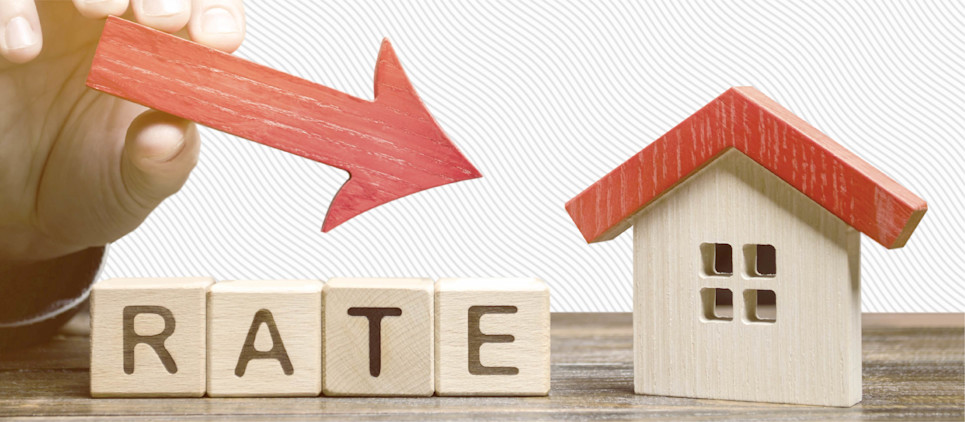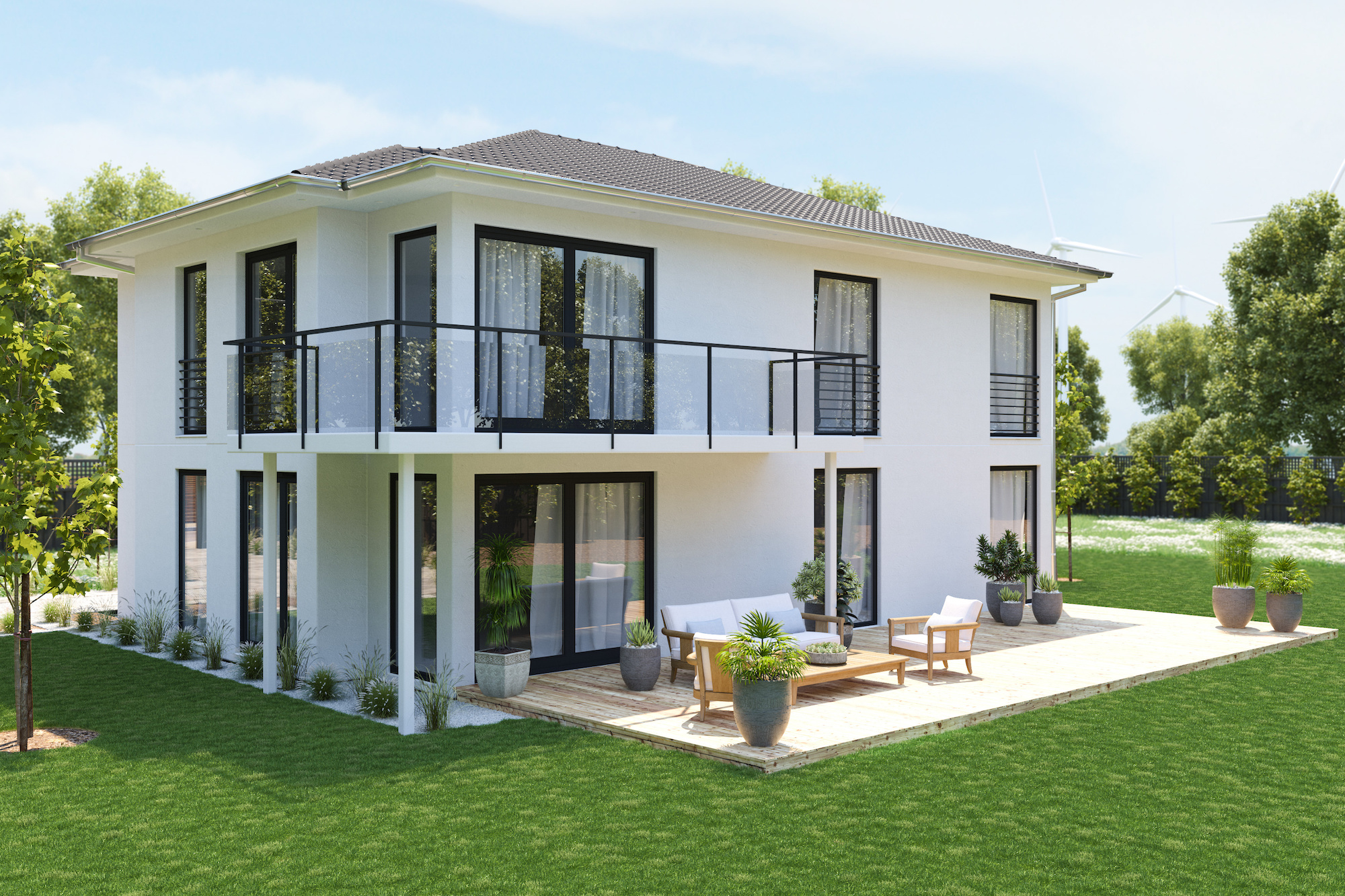Gauging property investment value with capitalization rate
Pursuing a large-scale investment, especially for the first time, can be daunting. The questions of what, where, and how to finance your future are important ones.
According to CNBC and nine notable millionaires, real estate is a solid start. From year-round income to consistent cash flows, real estate can yield higher and more frequent returns than stocks or bonds.
First, it’s important to compare your options to ensure you’re making the most logical and informed decision. When it comes to real estate, that all starts with capitalization rate.

Table of contents
What is capitalization rate?How to calculate the cap rateUses and limitations of cap rateWhat makes a good or bad capitalization rate? What factors impact capitalization rate? Final ThoughtsWhat is capitalization rate?
In real estate, the capitalization rate, or cap rate, is used to show the expected rate of return on an investment property. It is expressed as a percentage of the initial purchase price and indicates its net gain or loss over a one-year time frame.
How to calculate the cap rate
To determine a property’s value, you have to take into account its net operating income (NOI) and current market value.
Capitalization rate = Net operating income / Current market value x 100%
The annual net operating income indicates how much you anticipate making on the property over the course of a year minus any operating expenses. If you rent out an apartment building, your NOI would be the rental income produced by your tenants minus building upkeep, property taxes, and other associated costs.
The current market value of a property indicates how much it could be sold for at any given time. The value fluctuates based on a number of factors, including features of the property, supply and demand, comparative sales in the area, and the overall real estate market.
Investment properties are purchased differently, some with cash and others with loans. The capitalization rate assumes all properties are purchased with cash to provide a baseline rate of return, regardless of loan repayment or interest rates.
Examples of capitalization rate
Say you’re interested in purchasing a multi-family unit as a rental property. Property A is in the city center while Property B is on the outskirts of town. You estimate that Property A will bring in $50,000 per year in rent, and you’ll need to pay $10,000 per year in property taxes and upkeep, making your net income $40,000. The current property value is $500,000, so your cap rate would be 8%.
($40,000 / $500,000) x 100% = 8%
Property B, on the other hand, has a net operating income of $30,000 and a current market value of $300,000. On this investment, your cap rate would be 10%.
($30,000 / $300,000) x 100% = 10%
Higher cap rates look better on paper because they indicate higher rates of return, but owning a property on the outskirts of town with lower demand could backfire. It’s important to consider factors outside of just cap rates when comparing investment opportunities.
Uses and limitations of cap rate
Real estate investors use capitalization rate to estimate the potential return, or profitability, of an investment. When investing in real estate, you want the highest chance of seeing the highest return while still operating within your comfort level.
Cap rates can help inform your investment decisions between markets, property types, and other investment options. For example, you can compare the cap rate of a property and the annual interest rate of government-issued Treasury bonds to get a sense of potential profit.
However, these two investment opportunities are not entirely equal. Bonds come with a level of certainty, guaranteeing a certain return if you hold them until maturity. With property investments, there is risk involved, which could be affected by the property’s resale value, the rental market, vacancy or problem tenants, or negative cash flow. Since cap rates are determined with only an estimated net income and a fluctuating market value, property investments are uncertain.

What makes a good or bad capitalization rate?
Cap rates are determined by anticipated future income, which can be unsteady and vary greatly. A good cap rate depends on two things: what you are looking to get out of an investment and how much you are willing to risk for it.
A higher cap rate is indicative of higher risk; a lower cap rate indicates less. Cap rates also tend to have an inverse relationship to how much the property is worth. A more expensive property will have a lower cap rate, and a less expensive property will have a higher cap rate.
What factors impact capitalization rate?
Before leveraging cap rate to make decisions on investment opportunities, it’s important to understand the factors that affect the rate. Failing to do so could result in a bad—and costly — business decision. Here are the three major factors that impact capitalization rate.
1. Property type
According to Bigger Investing, there are six different property types: agricultural, residential, commercial, industrial, mixed-use, and special purpose, which are then further divided by property characteristics. Commercial real estate, for instance, includes office spaces, shopping centers, and hotels, among others. The type of property determines the risk, expenses, and potential return, all of which inform the cap rate.
2. Property value
Real estate investments have different cap rates depending on how they fit into the market as a whole. On a national scale, real estate in cities tends to have higher cap rates than similar properties in smaller cities or towns. Economies in urban areas are diverse, vibrant, and tend to be more stable, says Yieldstreet, so these investment opportunities are perceived as less risky than their rural counterparts.
Picture an apartment building in a big city: This complex would cost a pretty penny, but big cities draw prospective tenants, so the potential returns would be higher. With less risk, one would expect a lower cap rate than if it were located in a more lightly trafficked part of the state.
On a more local level, cap rates also depend largely on comparative properties within the area. Properties of a town or city are divided into classes—A, B, and C. According to RealtyMogul, investors, lenders, and brokers have developed the class system to more effectively and efficiently communicate the quality of a property. Class A buildings are considered the highest quality based on their location and condition. Because they are valued higher, Class A properties have a lower cap rate.
3. Rental potential
A property’s features and condition do not only inform its overall value but also how desirable those features are to prospective tenants. Without tenants, an investment property will bring in little to no income, which could make it more of a financial burden than a revenue stream.
Along with features and condition, rental potential comprises several factors, including supply and demand of real estate in the area and the strength of the rental agreement. All of these moving parts feed into the leasing potential of a property and therefore the cap rate.
Final Thoughts
Capitalization rates can help you gauge the potential of a property investment, but they offer a limited scope by only taking two elements into account: the property’s net operating income and current market value. At the end of the day, cap rates are based on estimates, not guarantees. When applying this rate to your own life, you should view it as guidance for how, when, and where to invest in real estate, rather than a promise for financial success.
Bungalow is the best way to invest and manage your real estate portfolio. We work with you to identify, purchase, fill, and manage residential properties—so that you can enjoy up to 20% more in rental income with a lot less stress. Learn more about Bungalow.
Ready to find your next home?
Move-in ready homes and a built-in community so you can feel at home, together — wherever you are.
Suggested articles




